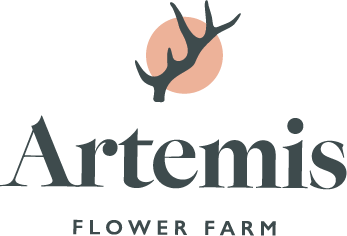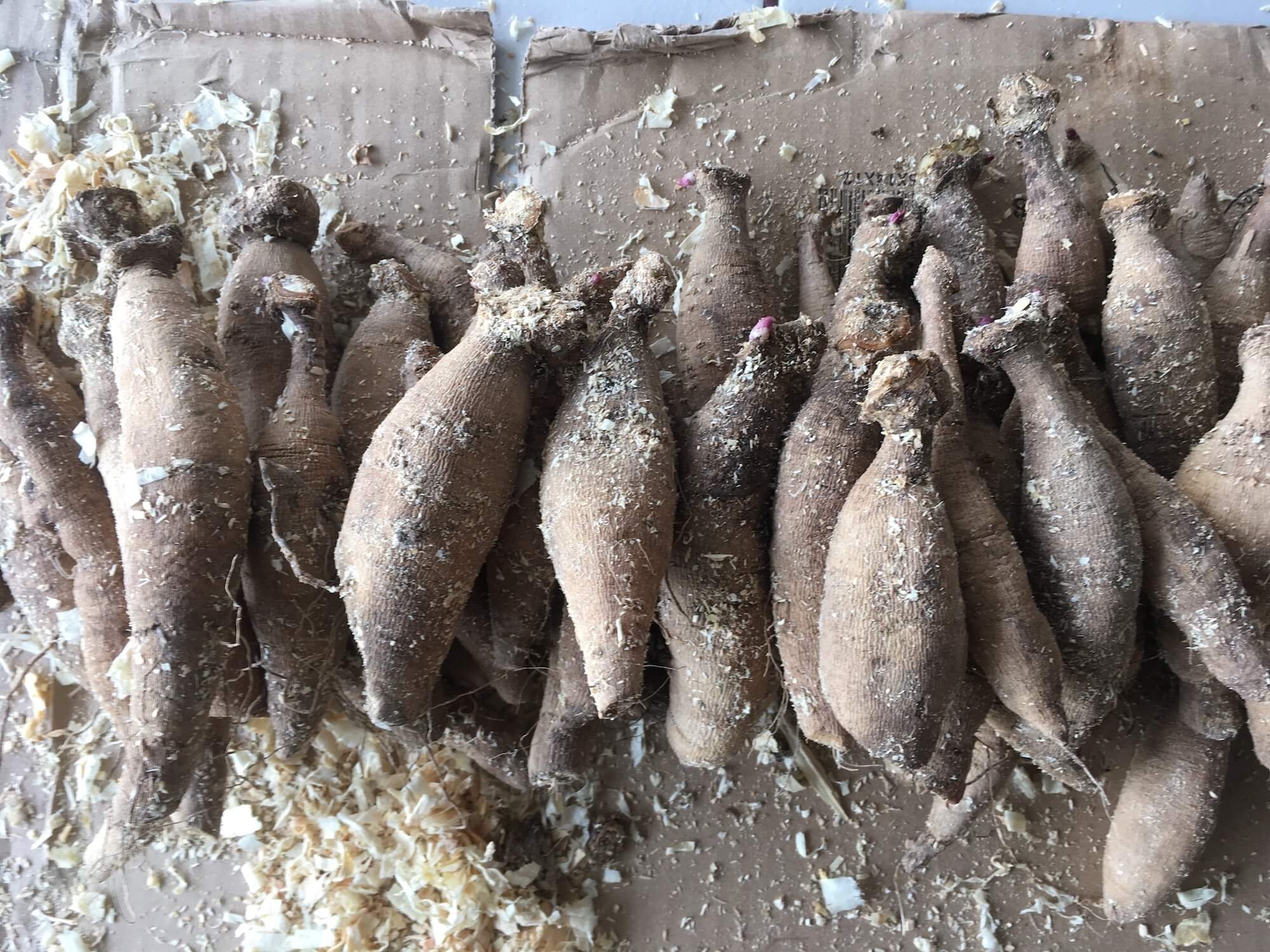Dividing Dahlias: Digging into the Numbers
What’s it worth to divide dahlia tubers? How long does it take? How many tubers do you get per clump? I wanted these answers, so here’s what I found out!
Dahlia tubers
It has always been a latent wish of mine to know more about how much production I’m getting from my flowers. When I was running my business primarily as a wedding design studio, bunching and counting the stems I was harvesting didn’t make sense logistically, so I didn’t do it. It was an extra step that only had to be undone in the studio. Consequently, I didn’t know much about my farm’s productivity compared to previous years or previous crops.
When I became the flower manager at Aspen Moon Farm, that all changed. I was able to keep accurate records of my harvests and get closer to finding a number of stems per plant, or stems per foot, that I can expect from a certain crop. I’m still not quite there yet, but I do know more than I ever have.
So in the fall, when we started dividing dahlias, I wanted to keep track of how many clumps we harvested, and then how many tubers we got from each clump, and to analyze that data by variety. I also wanted to know how many tubers could be divided per hour, and what the labor cost of digging, washing, dividing, and packing would be versus the estimated value of each tuber.
For some background: I plant my dahlias 2 weeks before last spring frost; for me, that puts dahlia planting around May 1. I plant into furrows 18” apart in bed-tops that are 48” across, after furrowing with shanks on the tractor and adding homemade compost. I plant each tuber 12” apart in the row. In 2019 I planted four 125-ft long beds, which meant I should have planted about 1,000 tubers. I only harvested 581 clumps in the fall, partly because I had a mix-up with a variety that I decided not to save, partly because quite a few of my tubers failed to grow (it was a weird spring), and also because I culled plants that were not the best producers.
Here are some highlights of what I learned:
Hollyhill Calico⇢
Lowest-yielding variety of those with more than 8 clumps, with an average of 4 tubers per clump.
100 ⇨
The average number of tubers per hour that I can divide.
50 ⇨
The average number of tubers per hour a new trainee can divide.
70 ⇨
The average number of tubers we can divide per person-hour of work (averaged across 8 days of dividing and a crew of 8 individuals).
20 ⇨
The most tubers produced by one clump (from the pom ‘Frank Holmes’)
7.8 ⇨
The overall average number of tubers per clump.
Tiny Treasure ⇨
Highest-yielding variety of those with more than 8 clumps, with an average of 12.5 tubers per clump.
$1,225 ⇨
Total spent on labor for digging, washing, dividing and packing tubers.
$22,420 ⇨
Total retail value of all tubers divided, at $5 per tuber. (Conservative estimate, since many could be sold at a higher price). Value at 90% survival rate is $20,178.
Below are all my data for the dahlia divide. On the left you see the varieties broken down by the number of clumps, number of tubers, and then arranged in descending order of the calculated production (tubers/clump). On the right, you see staff hours spent dividing, and the number of tubers per hour. Folks are paid between $12 and $16 per hour. I didn’t ask people to keep track of how many tubers they personally divided, mainly because that would be a pain, but also because I didn’t want people to feel pressure to be fast & end up making bad cuts instead. I only know my personal number because there was a day when I was by myself.
Varieties in order of tuber production
Staff hours for dahlia dividing
So, is it worth it?
I’d say yes. Rounding up costs to $1,500 for packing materials (peat moss & wood shavings) and overhead to run the cooler over the winter, we ended up spending $0.33 per tuber, and more than septupled the number of tubers we own. Wholesalers usually sell tuber clumps for $1.25-$1.50 each in multiples of 25, and my past experience has been that they are not all that great quality. To buy a quality tuber from a local grower, I’d have to spend at least $5, not including shipping. Of course, I haven’t included the costs of the original tubers or the planting labor - I would include that in a cost-benefit analysis that considered the value of the cut flowers as well.
Now, rest assured, I am not going to plant 785 ‘Cornel Bronze’ tubers in 2020. Rather, we will take the overwintered tubers that we don’t plant on the farm and sell them either as bare roots or as potted plants to our CSA members, at our farm stand, and perhaps at the farmers market. Below, you can see the numbers showing that if I have 90% survival and sell the tubers that I don’t plan to plant at $5 each, I can potentially make over $10,000. Of course, selling those tubers comes with its own labor, overhead, and materials costs, but it would still make a decent chunk of change. I know that I can sell 2,000 tubers online, but I don’t know if we can do it through physical retail outlets — we’ll see!
Value of divided tubers
Not only does digging and dividing your own tubers make economic sense, it allows you to create a connection with seasons past and future - just like saving seeds. It also makes your tuber stock uniquely adapted to your farm—your soils, your climate, your growing methods—especially if you are selectively saving only the burliest and most productive plants. And if you do choose to sell your tubers online (whole ‘nother story!) you can be assured of winter income.
I’d absolutely love to hear your thoughts on this post, and how your dahlia numbers compare.


